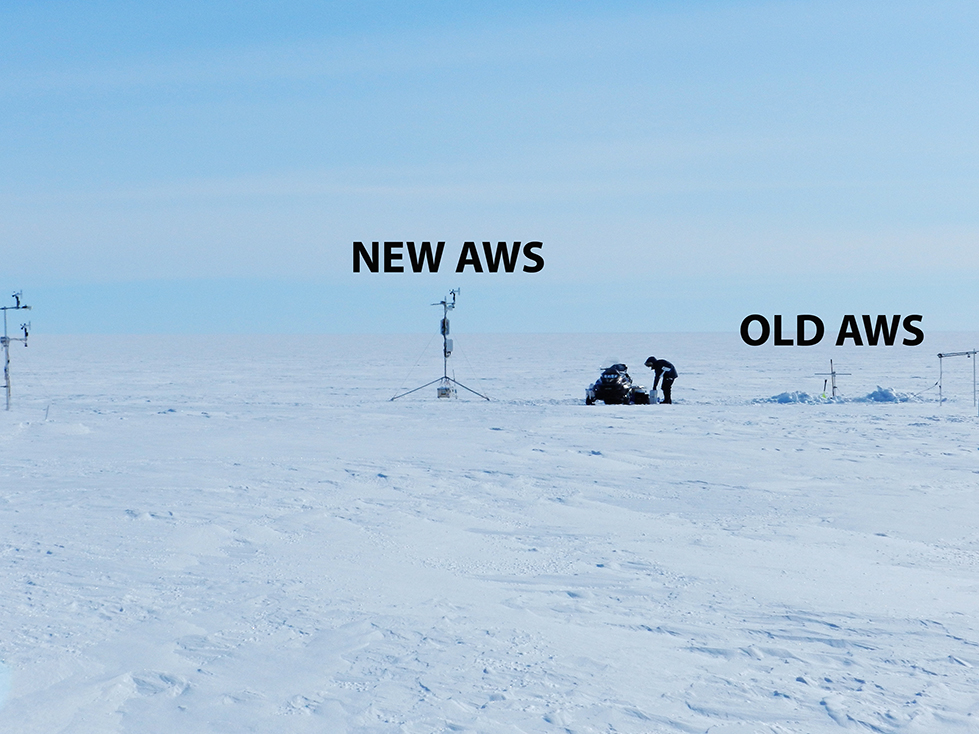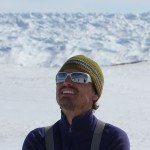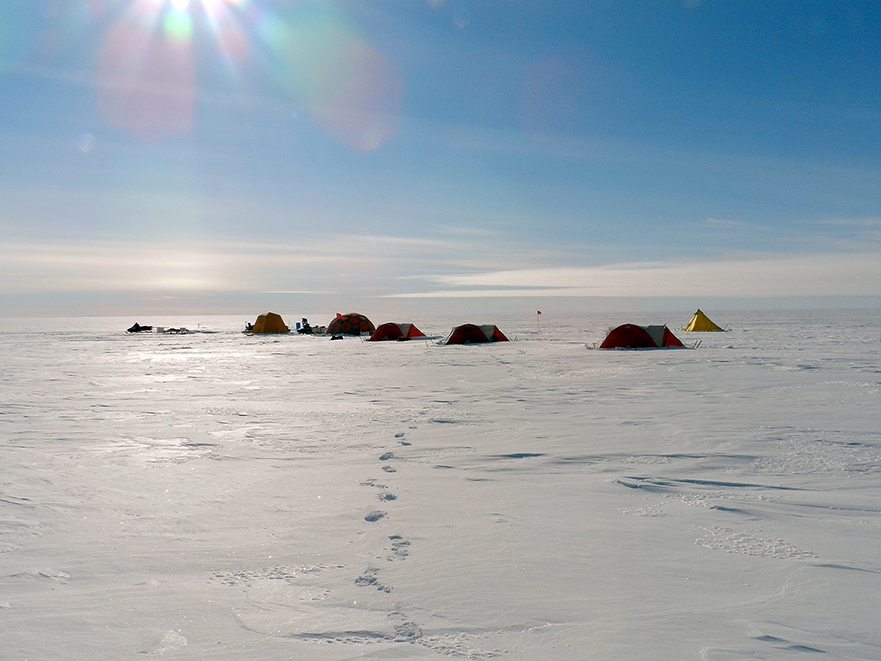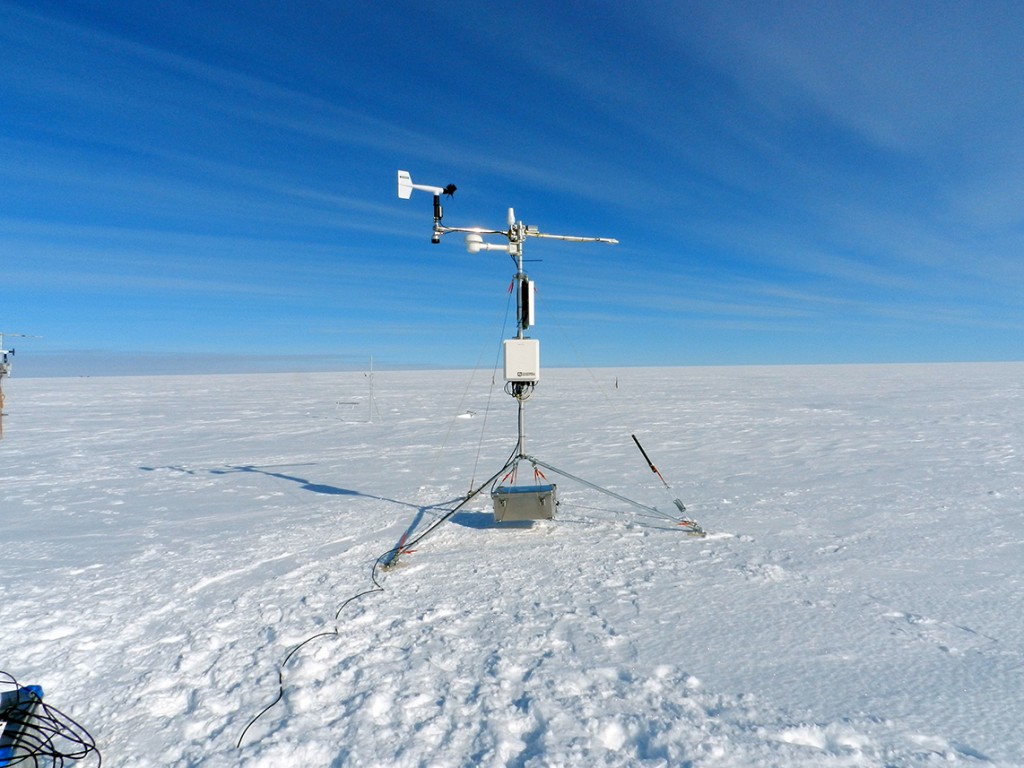by Achim Heilig
The elevation at KAN-U is the is the lowest of all the sites we visited on the ice sheet at 1840 m asl (6037 ft asl), which consequently experiences the largest amount of melt. The ~3-hour, 65km (40 mi) traverse to KAN_U was a relatively smooth journey. Due to strong katabatic winds that morning, we were unable to pack up and move camp until later in the afternoon and ended up having a very late dinner after we arrived.
KAN_U was our busiest site, and the tasks there were numerous:
- We needed to build a new automatic weather station (AWS) to replace the old GEUS KAN-U AWS, which was now buried in the snow
- Disassemble and remove all instruments from the old AWS
- Set up a mass-balance pole network to assess spatial variability in snow accumulation and measure each pole with GPS readings to assess annual dynamic movement
- Extend the existing CIRES FirnCover station
- Drill a firn core
- Install 2 thermistor strings
- Installed compaction station (one at the GEUS AWS, the other at the CIRES AWS)
- Extract a Snow Pack Analyzer (SPA), which had been installed in 2012
Weather was pleasant our first full work day, which supported progress for all tasks. Babis and I built the AWS and drilled a thermistor hole for the weather station. Max, Darren and Shane took care of the mass-balance network including density determinations of the recent snow accumulation and Mike prepared the extension of his station.

Weather stations at KAN-U. Another year and the pole of the old GEUS AWS will disappear. Photo by Achim Heilig
The next morning started again with strong katabatics, however, the inclement conditions did not prevent us from extracting the SPA which was located at a depth of approximately 1.5 m (5 ft). Unfortunately, the system had not produced any usable data for 3 years.
Almost all tasks were completed by the second day, thanks to improved weather conditions and by day three, we finalized the tower for Mike’s station. Heading back to DYE 2, we were able to traverse at an average speed of 35 km/h (22 mph). We had another late arrival and dinner by 11pm.
It was quite surprising to me that plastic containers could break so easily in the cold, which consequently, one dropped a 24 Ah battery on my knee. Nothing serious, but a bit painful.
– Achim Heilig



